The 2019/20 season has brought some surprise packages to La Liga and one of those who has continued to impress after years of gradual improvement is Levante forward Roger Martí.
It has been some time since Levante boasted such a talent in the ranks and with 11 goals in 26 games, he is the sixth top goalscorer in La Liga and is the third-highest Spanish goalscorer. In fact, his minutes per goal return of a goal every 152 minutes is actually the third-best in the division, behind only Barcelona duo Lionel Messi and Luis Suárez.
This scout report will provide a tactical analysis of the Levante man’s performances in La Liga and in the Copa del Rey in 2019/20. It will give an analysis of his tactics within the Levante set-up which has made him one of the competition’s most prolific strikers.
His position
Within the Levante attack under Paco López, Roger has become a key player within his attack. López has developed a reputation for his flexibility with Levante, regularly switching and swapping the formation that his team line-up with, though Roger’s position is rarely affected by this. Playing as the central figure in attack, it is usually those around him that adapt whether it is a one-man, two-man or three-man attack being deployed. At all times, particularly when bursting into the box, Roger will take up a central role, then drifting more into wide areas as he comes deeper for the ball, avoiding hold-up play where possible.
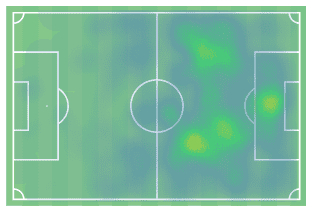
This is reflected in his heat-map and also reflects the importance of the fluidity of López’s system to getting the best out of the centre-forward. He will regularly link up with players like José Luis Morales or Enis Bardhi and in fact swap and interchange his positioning with them in order to drift wide to win the ball and cut in at an angle if he is lacking service through the middle. Where possible, he will always be looking to get on the end of crosses into the box, with 14.95 crosses per 90 minutes registered by Levante.
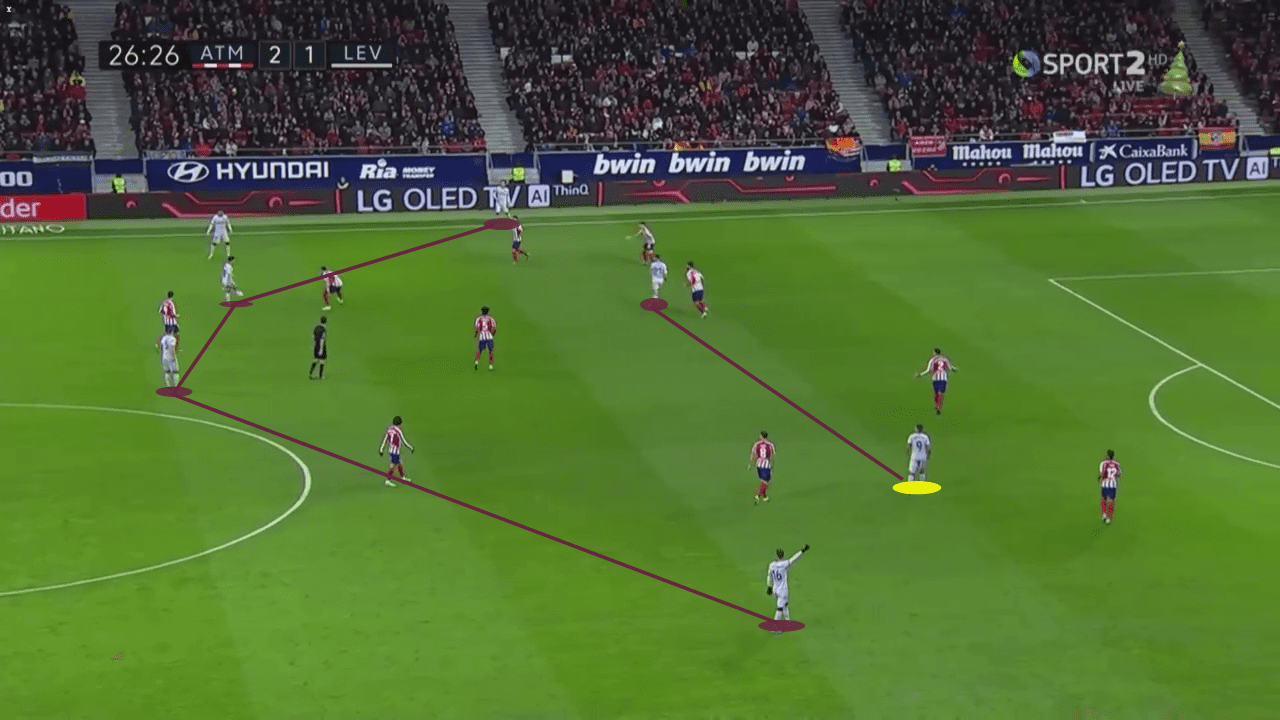
López’s preferred formation is a 4-4-2 with Roger usually partnering Morales in the front two, with Borja Mayoral and Sergio Leon also options available to him. As can be seen in this example against Atlético Madrid, where it was Mayoral who lined up alongside him, Roger links up with the second striker but will look to exploit the gaps in between defence and midfield, or even between central defenders and full-backs, rather than sticking to the last man. That is a clear part of his game plan to be liberated with space to move into.
Strengths
A key part of this system is that Roger is afforded freedom in the final third. With such freedom, he is allowed to make the most of one of his greatest strengths: his movement and reading of the game. As the main man in attack, somewhat of a poacher looking to get on the end of chances rather than a creator, he will often drift around between markers and look to confuse opposition backlines who lose track of who is following him. Regularly, that will end up with Roger appearing at the far post in order to convert.
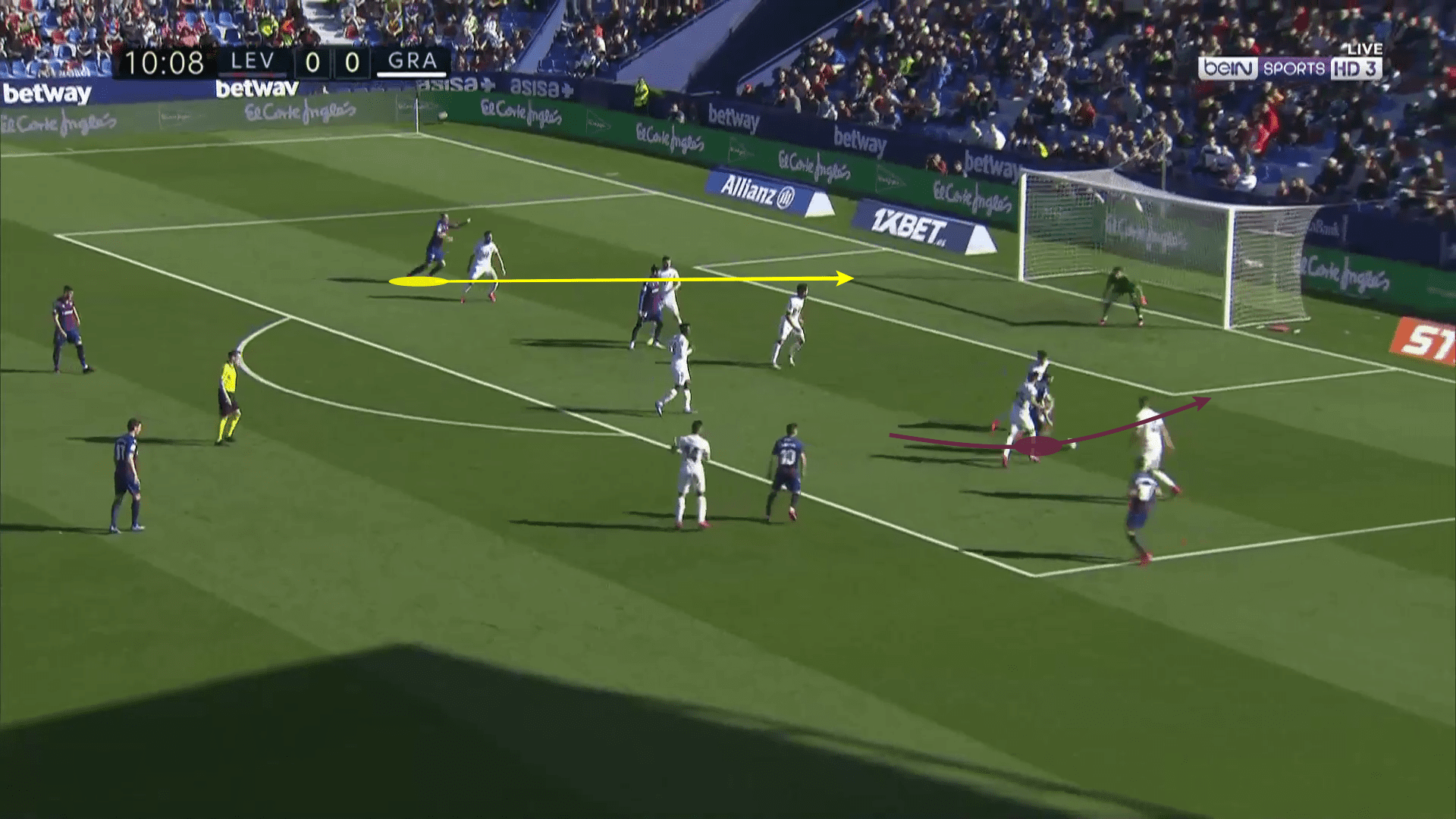
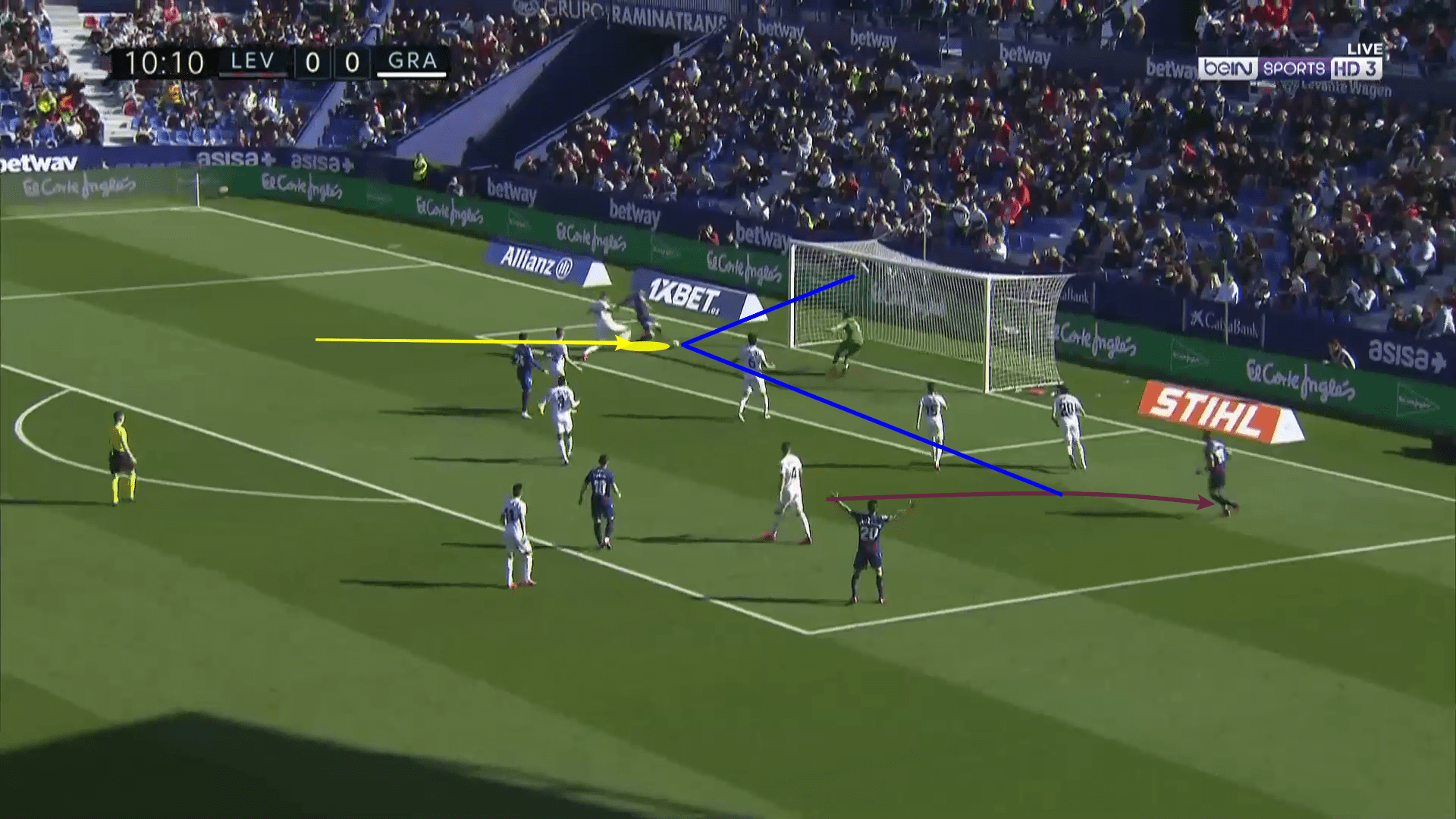
This was indeed the case against Granada, where Roger would regularly make such moves. Whilst many expected Morales to attack Víctor Díaz given his pace up against the Granada captain’s lack of it, Morales would often look to attack the opposite flank, seemingly to the surprise of Granada. The reason became clear early on, as this would allow Roger to drift off at the back post and make late runs to connect to a cross from Morales and get there before the full-back. Such link-up play and connection with Morales has been integral to Levante picking up points at many times this season, but few more so than on this occasion against Granada where they created opportunities through the unexpected by capitalising on Roger’s movement.
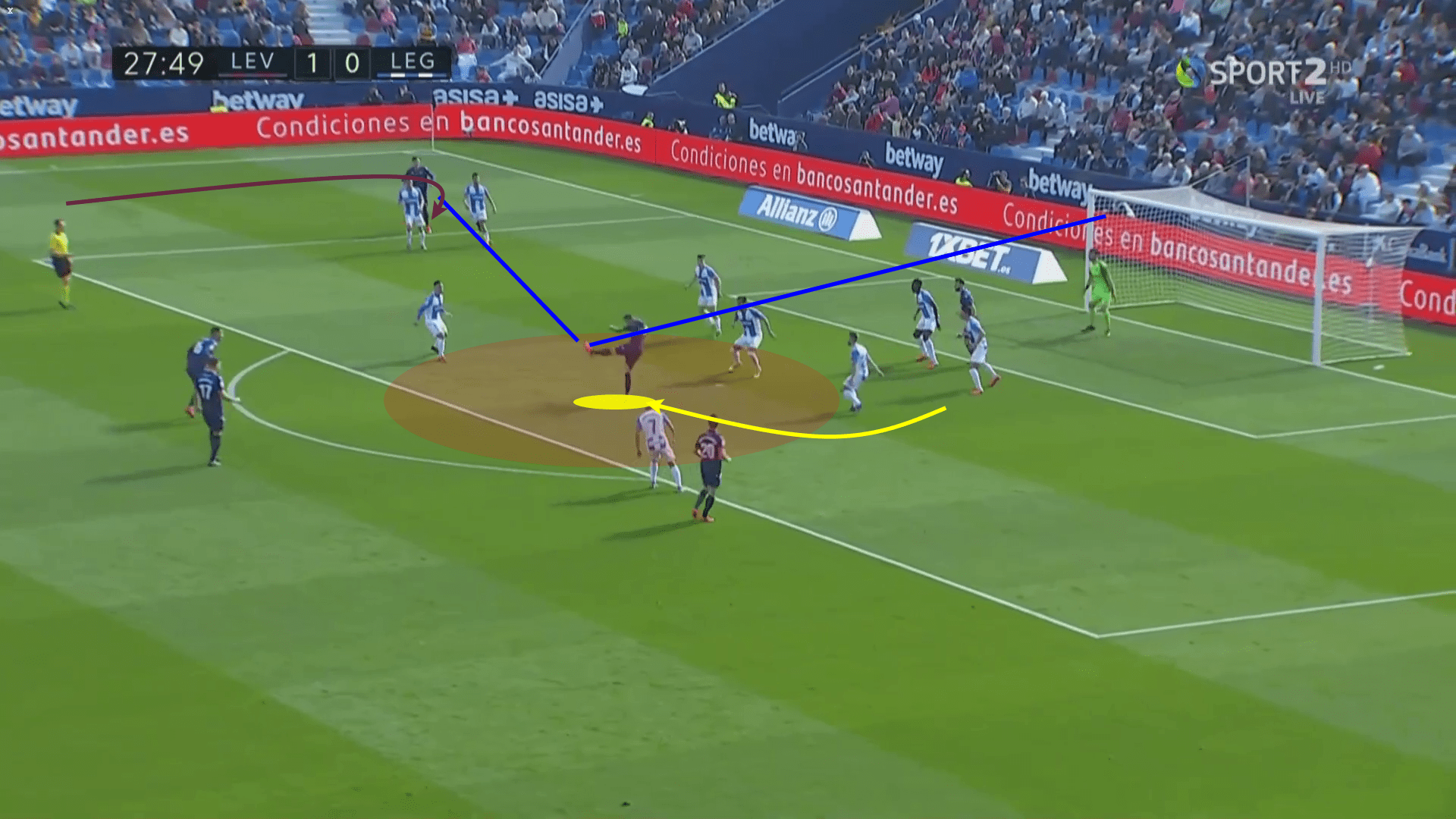
Beyond simply having great movement, Roger is also a clinical finisher. Only Lionel Messi, Ángel Rodríguez, Willian José and Loren Morón are exceeding their xG with their goal return by a greater distance than Roger, who requires 0.8 xG for each one goal scored. No player with a lower xG has scored more goals and it shows in the low xG of some of the goals he has scored, with this example against Leganés worth just 0.9 xG as his movement allowed him to find space, but coming backwards at an awkward angle and still managed to apply the finishing touch. It was one of just three goals to be scored with less than 0.1 xG, a figure only beaten by Lionel Messi on seven so far in this campaign.
Weaknesses
Throughout this analysis, a picture of Roger as a clinical finisher and a poacher within the box has been painted. That is most certainly the case, and as is evidenced by the statistics, very few players are better at performing this role than the Levante number nine. However, there are weaknesses to his game which are often highlighted when Levante are looking to transition or are in the defensive phase. Here, Roger can often be an absent figure which leaves Levante with a set-up almost as if they were playing with just 10 men rather than with another striker on the field. It may well be for this reason that Roger has not played the full 90 minutes against any of La Liga’s top five sides this season. and did so just once from 10 games in 2018/19.
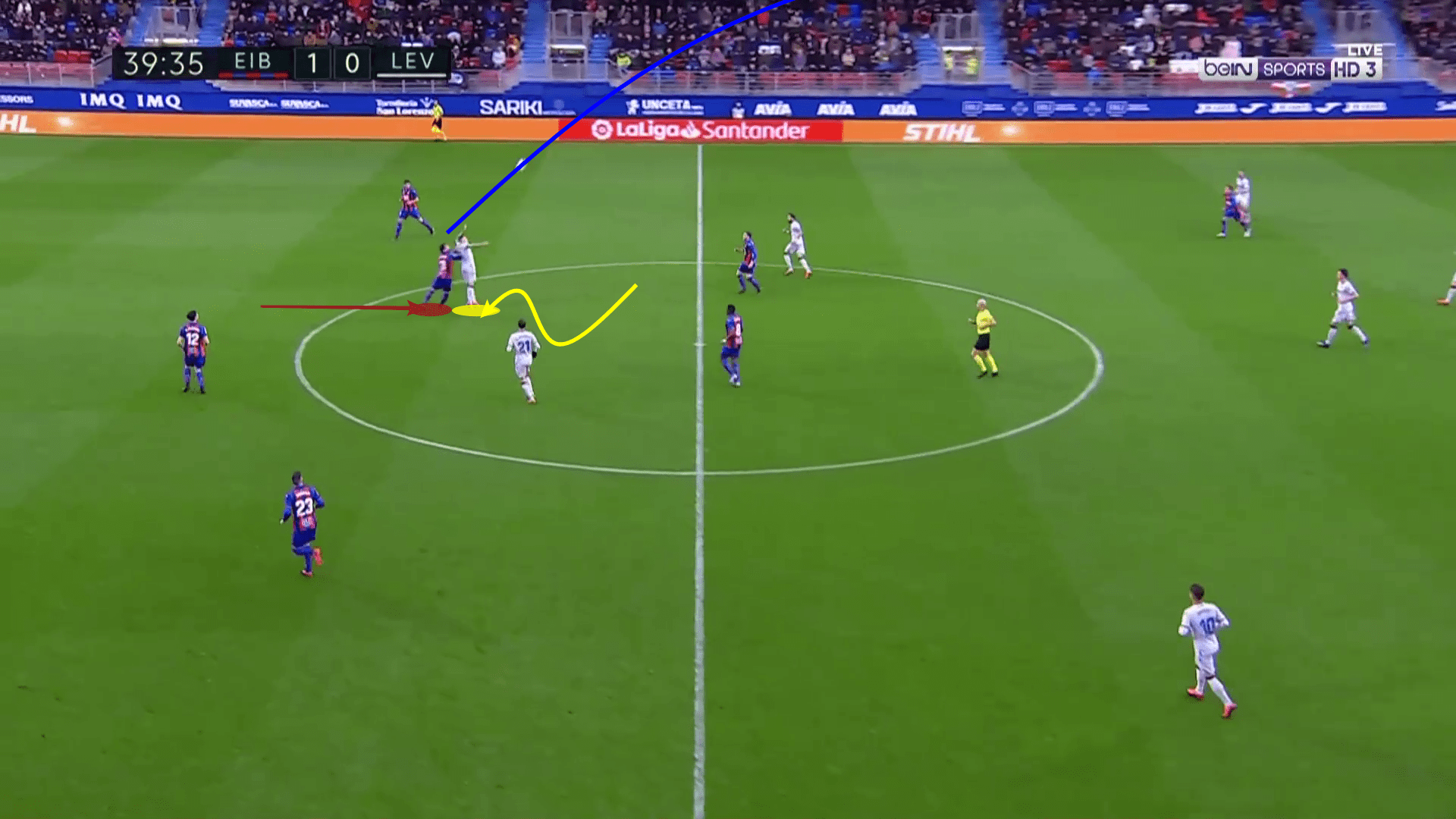
The first point here to consider is that his hold-up play is very poor. In a side built around rapid counter-attacks and pace down the wings, he is simply not well adapted to winning long balls or aerial battles to flick on to wingers. Of La Liga’s top 20 players for aerial duels, 17 are forwards, yet Roger simply cannot compare. For example, while Alavés striker Joselu registers a 51.1% success rate in aerial duels, Roger’s return is just 21.9%. In part, this is down to his poor positioning in such scenarios. Given his preference for a ball to feet, he will often drop deep and then find himself backpedalling and anticipating the landing of the ball, often adapting his run repeatedly as the ball descends. This makes it easy for any defender to step up and clear and gain the dominant position in the battle.
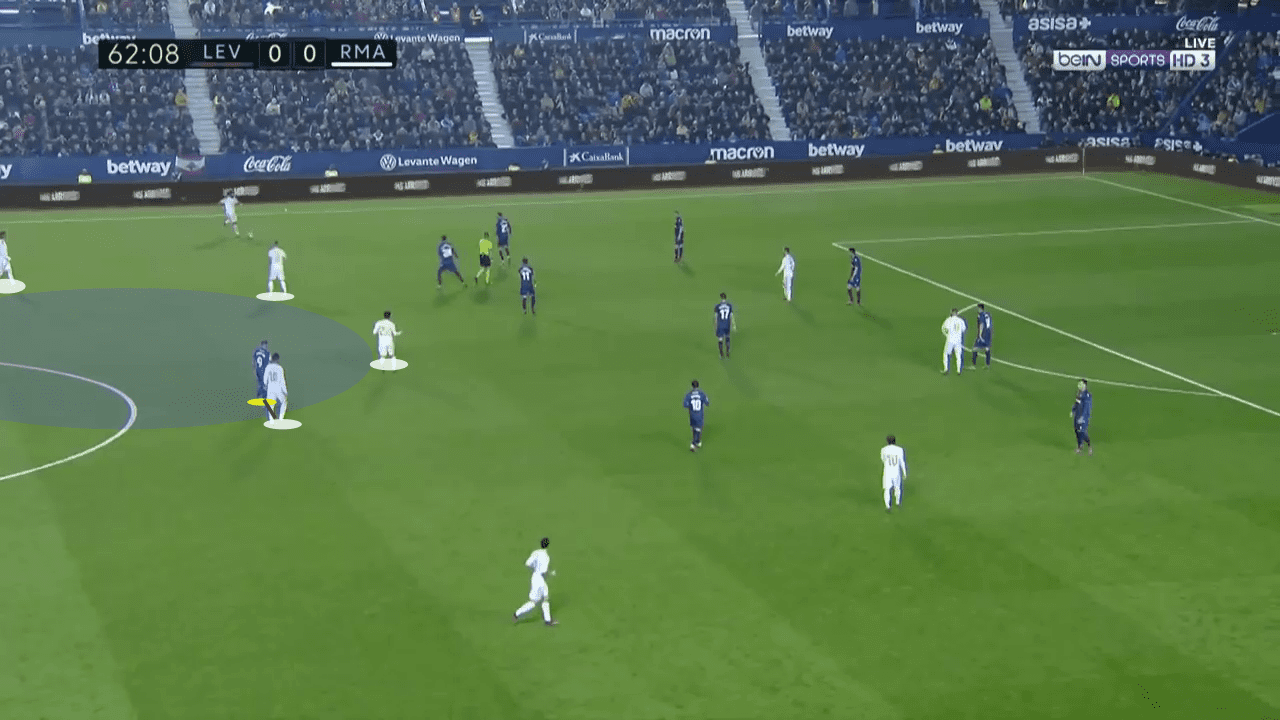
Another aspect is that Roger has a very disappointing defensive contribution. This was reflected in his performance against Real Madrid when defensive discipline was more important than ever. Roger was the man to lead the line but offered very little pressing to put any urgency into Real Madrid’s play, allowing them to dominate possession. As can be seen in this example, he neither looked to close down any Real Madrid players, nor did he find space to be available should possession be won back. By finding himself so close to Casemiro within a four-man Real Madrid unit, he offered no defensive value and was equally difficult to access as a counter-attacking outlet. In fact, with 2.08 recoveries per match and just 4.46 defensive duels, he is one of the La Liga forwards who are least active defensively, playing in a side who require every man when defending.
Conclusion
This scout report on Roger shows why he has been so successful in La Liga this season, building on his return of 13 goals from 2018/19 having seemingly reached his peak at a late age given that is now 29 years of age. His intelligence in reading the game and clinical finishing is hard to compare with many other La Liga players at his level and would suggest that he should be playing at a much higher level. It is in his all-round involvement where he is let down though, and not even López trusts him in major games against La Liga’s biggest teams where a defensive shift is required from all 11 of his men. As such it may not be a surprise that he was linked with Barcelona earlier this year, given the lack of defensive requirements and the need for a poacher in the box. Despite that, with figures in front of goal worthy of an elite striker, it is easy to see why Levante would be so keen to keep hold of him.





Comments